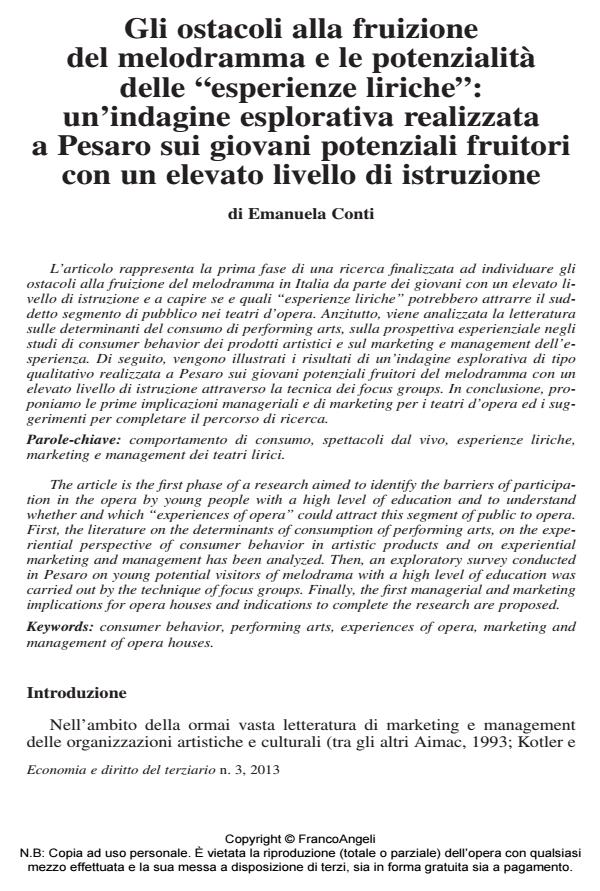Gli ostacoli alla fruizione del melodramma e le potenzialità delle "esperienze liriche": un’indagine esplorativa realizzata a Pesaro sui giovani potenziali fruitori con un elevato livello di istruzione
Journal title ECONOMIA E DIRITTO DEL TERZIARIO
Author/s Emanuela Conti
Publishing Year 2014 Issue 2013/3
Language Italian Pages 22 P. 437-458 File size 580 KB
DOI 10.3280/ED2013-003006
DOI is like a bar code for intellectual property: to have more infomation
click here
Below, you can see the article first page
If you want to buy this article in PDF format, you can do it, following the instructions to buy download credits

FrancoAngeli is member of Publishers International Linking Association, Inc (PILA), a not-for-profit association which run the CrossRef service enabling links to and from online scholarly content.
The article is the first phase of a research aimed to identify the barriers of participation in the opera by young people with a high level of education and to understand whether and which "experiences of opera" could attract this segment of public to opera. First, the literature on the determinants of consumption of performing arts, on the experiential perspective of consumer behavior in artistic products and on experiential marketing and management has been analyzed. Then, an exploratory survey conducted in Pesaro on young potential visitors of melodrama with a high level of education was carried out by the technique of focus groups. Finally, the first managerial and marketing implications for opera houses and indications to complete the research are proposed.
Keywords: Consumer behavior, performing arts, experiences of opera, marketing and management of opera houses.
Emanuela Conti, Gli ostacoli alla fruizione del melodramma e le potenzialità delle "esperienze liriche": un’indagine esplorativa realizzata a Pesaro sui giovani potenziali fruitori con un elevato livello di istruzione in "ECONOMIA E DIRITTO DEL TERZIARIO " 3/2013, pp 437-458, DOI: 10.3280/ED2013-003006